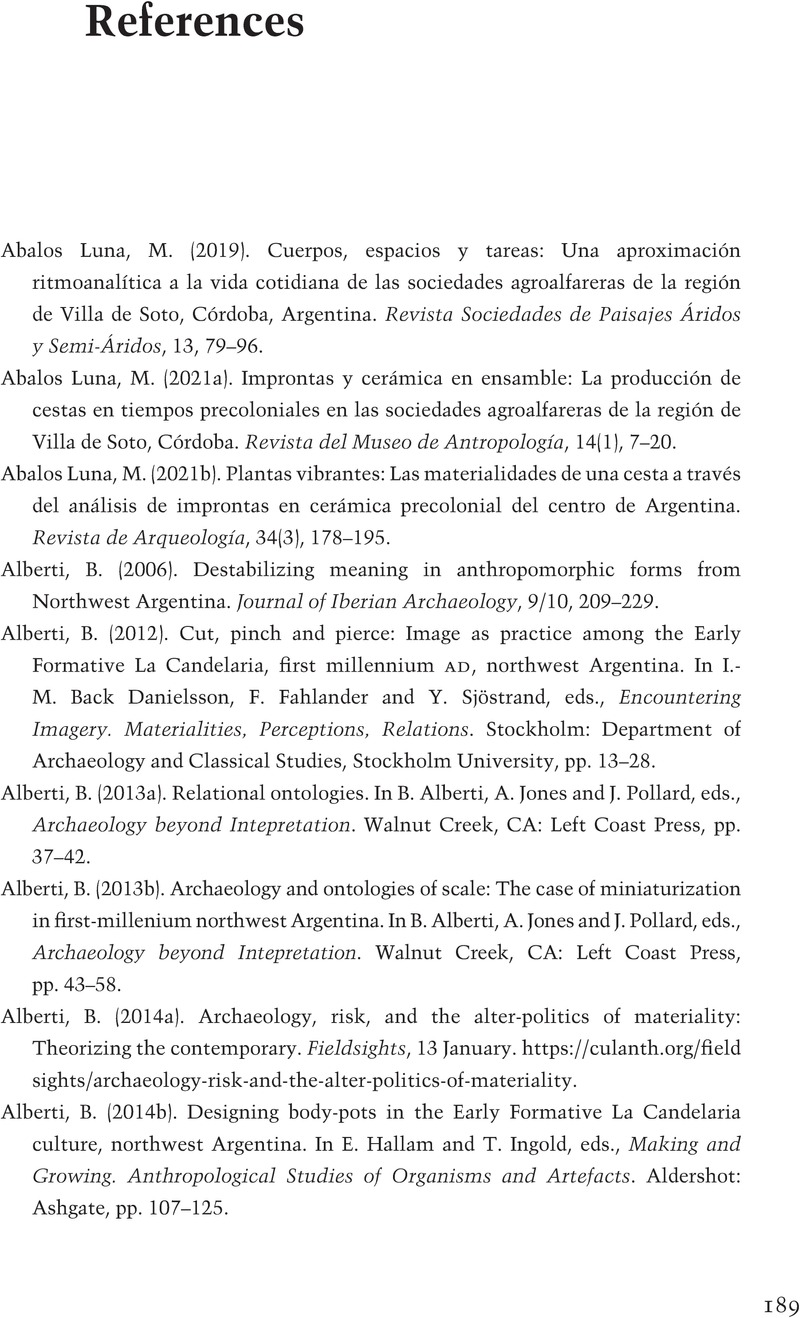Book contents
- Perspectivism in Archaeology
- Perspectivism in Archaeology
- Copyright page
- Dedication
- Contents
- Figures
- Foreword
- Preface
- Acknowledgements
- Abbreviations
- 1 Perspectivism
- 2 Perspectivism as a Theory
- 3 Perspectivism, Materials and Objects
- 4 A Perspectivist Approach to the Archaeology of Ambato
- 5 Pot-Persons in Ambato
- 6 Inhabiting a Perspectivist World
- 7 Perspectivism and Archaeology
- References
- Index
- References
References
Published online by Cambridge University Press: 01 February 2024
- Perspectivism in Archaeology
- Perspectivism in Archaeology
- Copyright page
- Dedication
- Contents
- Figures
- Foreword
- Preface
- Acknowledgements
- Abbreviations
- 1 Perspectivism
- 2 Perspectivism as a Theory
- 3 Perspectivism, Materials and Objects
- 4 A Perspectivist Approach to the Archaeology of Ambato
- 5 Pot-Persons in Ambato
- 6 Inhabiting a Perspectivist World
- 7 Perspectivism and Archaeology
- References
- Index
- References
Summary

- Type
- Chapter
- Information
- Perspectivism in ArchaeologyInsights into Indigenous Theories of Reality, pp. 189 - 220Publisher: Cambridge University PressPrint publication year: 2024



